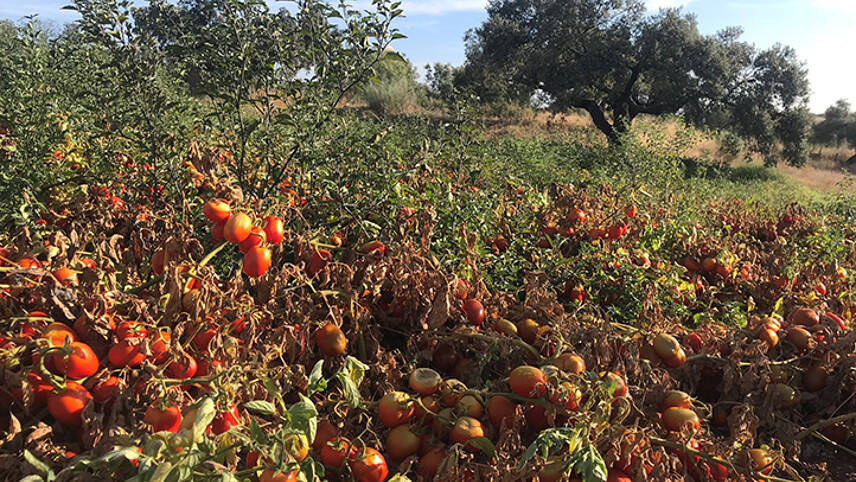This premium content is exclusive to edie Members.
To find out more about edie Membership, please click below.
If you are an existing member, login here

At a glance
Who: Unilever
What: Regenerative farming trials
Where: Italy, Spain and the US
Why: To reduce emissions and boost biodiversity across the supply chain
When: Principles launched in 2021 with trials ongoing
The challenge
The Sustainable Markets Initiative (SMI) estimates that just 15% of the world’s croplands by area size are farmed using regenerative practices at present, which could mean that much of the world’s agricultural land becomes unfit for purpose in the future, adding more pressure to the need for sustainable food systems.
The solution
In 2021, Unilever presented its Regenerative Agriculture Principles, aimed at working with farmers, suppliers and partners to apply agricultural practices that can regenerate and protect soil, help ensure food security and supply chain resilience, and contribute to Unilever’s net-zero pathway, with results for 2022 now published.
How it works
Unilever implemented four different projects across different companies to examine and trial practices focused on regenerative farming.
Four projects were designed to implement new practices that addressed the challenges and unique needs of different crops and landscapes, while also providing a framework to measure the impact of implementation that the company hopes to apply to other sites.
Knorr, in partnership with Spanish tomato supplier Agraz, is working to help farmers in the Badajoz region protect their crops from the effects of decreased rainfall and depleted underground water reserves.
The project currently uses cutting-edge sensors and soil probes that inform farmers about the exact amount of water needed, the new irrigation systems allow more precise water use, resulting in significant financial savings and a more resilient production system. In a second trial, three farmers were encouraged to plant wildflower borders in order to increase biodiversity.
Knorr also teamed up with US rice supplier Riviana and the University of Arkansas (UARK) to find ways for farmers to grow rice while preserving water reserves and decreasing methane emissions when fields are flooded.
The programme introduced a suite of new practices, including furrow irrigation and a method called wetting and drying which, by reducing the amount of time the land stays under water, decreased the amount of methane released.
Elsewhere, Hellmann’s has been working with Practical Farmers of Iowa, PepsiCo and soybean supplier ADM to better protect the soil used to grow soybeans for Hellmann’s mayonnaise in the US. The project also aims to reduce greenhouse gas emissions and nitrate levels in water.
A total of 523 farmers and over 35,000 hectares of farmland have been involved in the cover crop planting project. Farmers were provided with financial and technical support.
The final project saw Knorr, in partnership with Italian supplier Parboriz, aim to find viable ways to reduce water pollution and greenhouse gas emissions, while also increasing biodiversity in Lombardy, Italy.
This initiative was based on four demonstration farms spanning 900 hectares, with the aim of testing out new practices and understanding how they could be applied to commercial farms.
The results
In Spain, the project saw a 37% decrease in emissions per kg of CO2 equivalent per kg tomatoes compared to before the project. Soil organic matter increased from 1% in 2020 to 1.27% in 2022 and there was a 173% increase in pollinators and a 27% increase in wildflower diversity.
The Arkansas project delivered 76% less methane (kg of CO2eq per kg rice) in comparison to what was released before the project. This led to a 48% reduction greenhouse gases emissions (kg CO2eq per kg rice).
The Hellmann’s project saw 4% less nitrate run off water compared to comparison fields and 6% less greenhouse gases compared to comparison fields.
As for the Lombardy trials, they successfully decreased the amount of chemical residue found in water. This included a 78% reduction in pesticide residue, a 62% reduction in herbicide residue and a 78% reduction in fungicide residue.
The business benefits
The nine projects, all of which are live in the field, cover 48,000 hectares of soy, rice, tomatoes, onion, garlic and dairy in North America, Europe and South Asia.
By the end of this year, Unilever is aiming to have about 300,000 hectares contracted – this builds on an ambition to have more than 100 programmes rolled out by 2030, all contributing to Unilever’s commitment to restoring and regenerating 1.5 million hectares of land, oceans and forests.
Industry context
Land use accounts for at least a quarter of global annual emissions and that food production is the top historic driver of deforestation and nature degradation. Moreover, 70% of global freshwater use by humanity each year is attributable to agriculture.
Ahead of COP28, nations are being invited to sign a new Leaders Declaration on Food Systems, Agriculture and Climate Action. In doing so, they will commit to embedding plans to reduce food system emissions in their Nationally Determined Contributions (NDCs) – their plans for playing their part in delivering the Paris Agreement.
At the moment, only a minority of nations make any reference to food systems in their NDCs, and even fewer have time-bound, numerical commitments to cut emissions. As such, regenerative agricultural practices will become far more common in the future.
© Faversham House Ltd 2024 edie news articles may be copied or forwarded for individual use only. No other reproduction or distribution is permitted without prior written consent.

